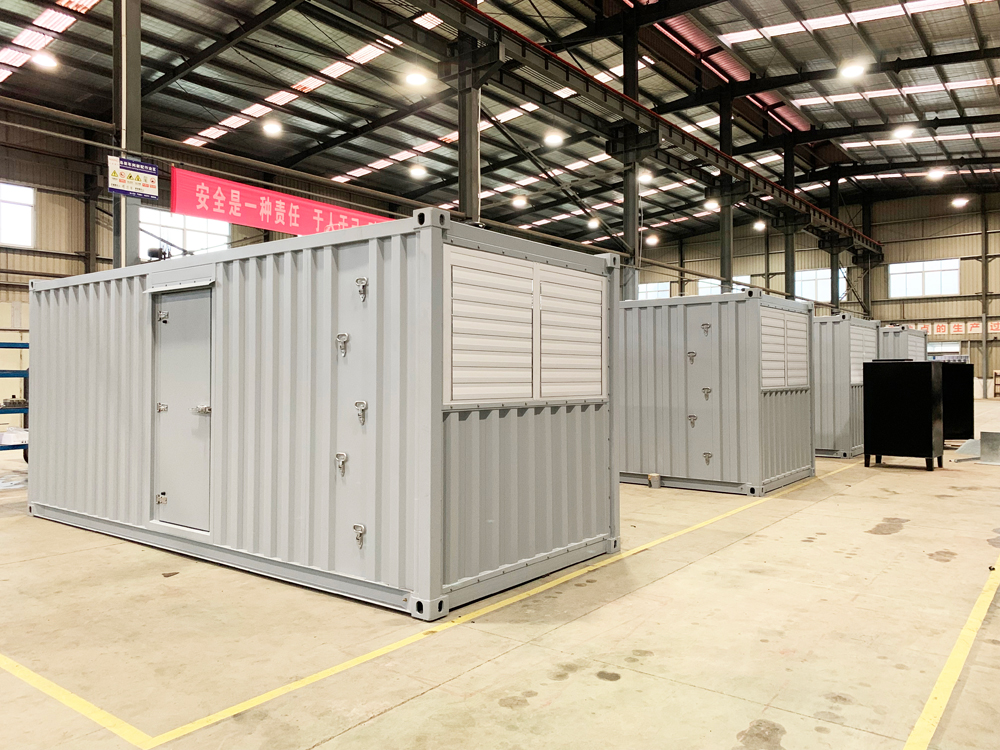
1. Report Summary
This report details the comprehensive and long-lasting anti-corrosion treatment processes applied to our containerized diesel generator sets. Our anti-corrosion system is strictly designed according to high standards, employing differentiated and scientific solutions tailored to the working environment and anti-corrosion requirements of different components of the unit, particularly the protective canopy chassis and external panels. The core objective is to ensure the chassis structure remains free from corrosion for 30 years, and the body panel topcoat resists fading, oxidation, and chalking for 10 years, achieving industry-leading levels in both appearance and durability for the overall unit.
2. Scope of Application
This anti-corrosion process applies to the external surfaces, internal structural components, and specifically the protective canopy chassis and body of all containerized diesel generator sets manufactured by [Supplier Company Name].
3. Referenced Standards
- GB/T 30790 "Protection of steel structures by protective paint systems"
- ISO 12944 "Paints and varnishes – Corrosion protection of steel structures by protective paint systems"
- GB/T 9271 "Paints and varnishes – Standard panels for testing"
- Internal Quality Control Standards

4. Anti-Corrosion System Design and Objectives
| Component | Anti-Corrosion Objective | Primary Treatment Process |
| Unit Protective Canopy Chassis (Channel Steel) | Guaranteed 30 years without corrosion | Abrasive Blasting → Zinc Spraying → Heavy-duty Bituminous Paint |
| External Body Surfaces (Panels) | Guaranteed 10 years without fading, oxidation, or chalking | Pre-treatment (Degreasing, Phosphating) → Epoxy Zinc-rich Primer → UV-resistant Topcoat |
5. Detailed Anti-Corrosion Process Flow
5.1 Long-lasting Anti-Corrosion Process for Body Chassis (Channel Steel)
The chassis, serving as the foundational load-bearing structure of the unit and constantly near the ground, is susceptible to erosion from water accumulation, moisture, salt, etc. Therefore, the highest grade "heavy-duty" anti-corrosion system is applied.
- Surface Pre-treatment - Abrasive Blasting (Sa 2.5 Grade)
- Purpose: Thoroughly remove mill scale, rust, weld spatter, oil stains, and all other contaminants from the steel surface, creating a clean, dry metal substrate and increasing surface roughness to significantly enhance coating adhesion.
- Standard: Using steel shot or grit as the abrasive, achieve a cleaning grade of Sa 2.5 (Very Thorough Blast Cleaning), resulting in a uniform metallic appearance and a surface profile (roughness) controlled between 40-75µm.
- Metallic Protective Layer - Zinc Spraying
- Purpose: Apply a layer of high-purity zinc coating onto the cleaned steel surface via thermal spray. The zinc layer acts as a sacrificial anode, providing cathodic protection to the steel. Even if the coating is slightly damaged, the zinc will corrode preferentially, protecting the underlying steel.
- Process Parameters: Zinc layer thickness not less than 80µm. The spraying process must be uniform, without misses.
- Barrier Protective Layer - Heavy-duty Bituminous Paint
- Purpose: Apply a high-performance bituminous paint over the zinc-sprayed layer. Bituminous paint offers excellent resistance to water, moisture, soil corrosion, and chemical stability, forming a dense, tough barrier that effectively isolates moisture and oxygen.
- Application Requirement: Use high-pressure airless spraying to ensure uniform coverage of all corners and welds. Apply no less than 2 coats, achieving a total Dry Film Thickness (DFT) of not less than 200µm. The cured film should be smooth to the touch, free from sags, runs, bubbles, or other defects.
5.2 Anti-Corrosion Process for Body Panels and External Surfaces
Body panels require both corrosion protection and aesthetics, hence a composite system of primer + topcoat is used.
- Surface Pre-treatment - Chemical Pre-treatment
- Process Flow: Degreasing (remove oils) → Rinsing → Phosphating (forms a phosphate conversion coating enhancing corrosion resistance and paint adhesion) → Rinsing → Drying.
- Standard: The phosphate crystal layer should be fine, continuous, and uniform.
- Primer Coating - Epoxy Zinc-rich Primer
- Purpose: Provides excellent anti-rust performance and cathodic protection function (similar principle to zinc spraying). The epoxy resin system offers excellent chemical resistance and adhesion.
- Application Requirement: Spray 1-2 coats, achieving a Dry Film Thickness (DFT) not less than 50µm.
- Topcoat Coating - UV-resistant / Anti-aging Topcoat
- Purpose: As the outermost layer, it directly withstands environmental factors like sunlight, rain, and temperature variations. We use high-performance polyurethane topcoat.
- Characteristics:
- Excellent UV Resistance: Contains UV absorbers and stabilizers, effectively slowing color fade and gloss loss caused by sunlight exposure.
- Anti-aging: The paint film has good flexibility, can withstand thermal expansion and contraction, and is not prone to cracking or chalking.
- High Color & Gloss Retention: Advanced formulation ensures no significant fading, loss of gloss, or chalking within 10 years.
- Application Requirement: Spray 2 coats, achieving a Dry Film Thickness (DFT) not less than 50µm. The color should be uniform and consistent, with a smooth, flat appearance free from orange peel, sags, runs, or particles.
6. Quality Inspection and Control
- In-process Inspection: 100% inspection and recording of each process step (blasting cleanliness and profile, zinc layer thickness, individual paint film thicknesses).
- Final Inspection:
- Appearance: The paint film should be smooth, color uniform, free from cracks, peeling, sags, runs, bubbles, scratches, or any other defects. Smooth to the touch.
- Film Thickness Check: Use magnetic or eddy current thickness gauges to measure the total dry film thickness at multiple points, ensuring compliance with design requirements.
- Adhesion Test: Perform cross-cut test sampling, achieving a rating of 0 or 1 (no paint removal).
7. Conclusion
The containerized diesel generator sets we provide, through the systematic and standardized anti-corrosion processes described above, incorporate a multi-layer protection system combining "cathodic protection" and "physical barrier protection." This system effectively resists corrosion in various harsh environments, fully meeting and exceeding the stringent technical requirements of "30 years without corrosion for the chassis and 10 years without fading, oxidation, or chalking for the body topcoat." This ensures high reliability and aesthetic appeal for the generator set throughout its entire lifecycle.
Post time: Nov-13-2025

















